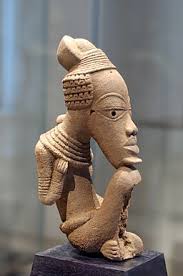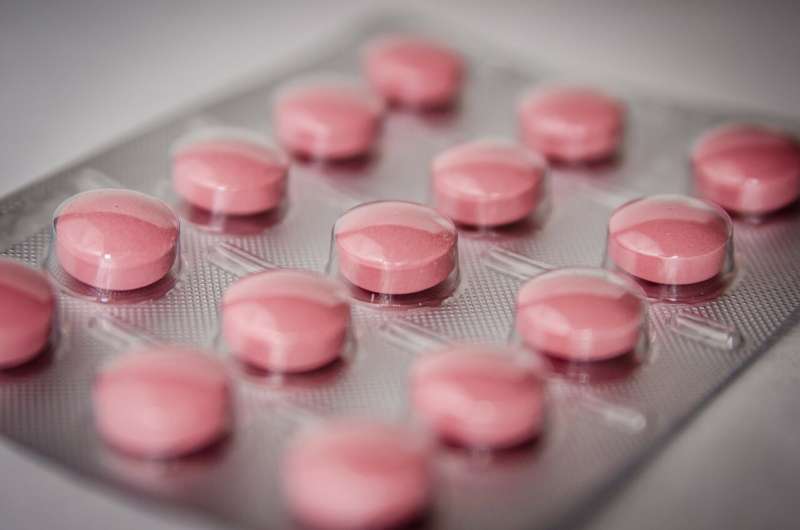The Circuit: Unique defibrillator map ‘will make a difference between life and death’















The Circuit: Unique defibrillator map ‘will make a difference between life and death’
NHS ambulance services have begun using a unique defibrillator map as they often do not know where the closest life-saving machines are during an emergency.
Ordnance Survey (OS) has teamed up with the British Heart Foundation (BHF) to create The Circuit, which maps defibrillators across the UK so 999 call handlers can provide people with the location of the nearest one.
It is the most accurate map of its kind thanks to the use of Unique Property Reference Numbers (UPRN) – unique references given to address and non-address locations in the UK by local authorities, among others. The concept is similar to a car registration or a National Insurance number.
They can be up to 12 digits in length and serve as a unique identifier for any location – a building, a bus stop, a post box, or in this case, a defibrillator. Sometimes there can be one defibrillator in an entire block of flats or there could be one on the outside of a large building, meaning people often struggle to find them quickly using traditional addresses.
Essentially, the UPRN ensures everyone refers to the correct location, even for an object that has no literal address – so call handlers can guide someone to the defibrillator’s exact location and talk them through how to use it until paramedics arrive on scene. The Circuit is designed to synchronise every 60 seconds with the live dispatch system of the ambulance services and provide them with the location of the nearest defibrillator in an emergency.
Neil Spencer, emergency operations centre manager at East Midlands Ambulance Service, said: “When we receive a call for someone who has stopped breathing, an ambulance is dispatched immediately and at the same time our 999 emergency medical dispatchers (EMDs) will advise the caller how to perform CPR.
“Making use of technology means our EMDs can see the location and availability of nearby defibrillators and if there is someone available at the scene, our EMD will provide directions to collect the defibrillator.”
According to the British Heart Foundation, less than 1 in 10 people survive a sudden cardiac arrest. But if a defibrillator is used within the first minute of a cardiac arrest occurring, the survival rate for victims can be as high as 90 per cent. For every minute that defibrillation is delayed, however, the chance of survival decreases to 10 per cent. If delayed for longer than ten minutes, the chance of survival for an adult suffering a cardiac arrest is lower than 5 per cent.
Cardiac arrests are one of the leading causes of death in the UK and account for roughly 100,000 deaths every year. Currently public access defibrillators are used in less than 5 per cent of out-of-hospital cardiac arrests but paramedics hope that number will rise as a result of the new system.
John Kimmance, managing director of national mapping services at OS, said: “We are humbled to support a critical, national service that can make a difference between life and death. Our authoritative data and expert support have allowed BHF to create more than just a map. This is an intelligent database underpinned by a highly accurate addressing referencing system that allows the ambulance service to identify tens of thousands of defibrillators instantly.”
Judy O’Sullivan, director of innovation in health programmes at the BHF, said: “The Circuit is a vital tool in our fight to improve survival rates from out-of-hospital cardiac arrests. The support of Ordnance Survey in improving The Circuit has been invaluable, both as a trusted and reliable data source and utilising their expertise in mapping.
“But much more needs to be done. Less than 5 per cent of out-of-hospital-cardiac arrests receive bystander defibrillation, and the survival rate is less than 10 per cent. This is in part because there are still tens of thousands of defibrillators not known to ambulance services.”
Ms O’Sullivan said registering your defibrillator is simple and could save a life, as well as being regularly checked and maintained. She urged people to register them via The Circuit website.
Reference: Paul Gallagher
High cholesterol: The ‘tasty' and ‘cholesterol-busting' fruit you should eat - expert















High cholesterol: The ‘tasty' and ‘cholesterol-busting' fruit you should eat - expert
It is often linked to lifestyle choices. Eating too much fatty food, not exercising enough and being overweight are known contributors to the build-up of cholesterol. Therefore, doctors will recommend patients switch to a healthier diet to lower cholesterol levels.
However, there is a certain fruit that could be even more beneficial than others.
Rob Carter, founder of fruit and vegetable wholesaler Naturally Best Fresh, explained how okra - also known as ladies' fingers - could play a "huge role" in reducing cholesterol.
Okra is actually the seed pod of a plant, and although classified as a fruit it is cooked more as a vegetable.
Speaking to Express.co.uk, he said: "Swap potatoes for okra in everyday meals to reap the cholesterol-busting benefits.
"AKA ladies' fingers, okra contains a healthy gel called mucilage that can help with high cholesterol, according to scientific studies.
"Polyphenols play a huge role in cholesterol management and dieticians would usually recommend eating colourful vegetables like the aubergiene to reap the benefits.
"However, okra has higher levels of inflammation-busting polyphenols like isoquercetin and studies have shown they notably help in reducing strokes and heart issues."
Although not commonly found in British dishes, okra is a popular ingredient in the United States as well as Middle Eastern, Indian, Brazilian and Sri Lankan cuisine.
"In comparison to most fruit and vegetables, okra has higher amounts of fibre, protein, vitamin B6 and folate which all help keep cholesterol under control," Rob added.
"You can grill or fry okra as a tasty side dish or add it to soups if you're not keen on the taste or texture."
There are two types of cholesterol found in the blood.
These are often referred to as "good" and "bad" cholesterol.
READ MORE: Shingles: The sign in the eyes that could signal the infection - 'Contact a doctor'

Having "good" cholesterol, known as high-density lipoprotein, makes you less likely to have heart problems or a stroke
Whereas "bad" cholesterol or low-density lipoprotein puts you at greater risk of this.
Along with diet, exercise and weight, smoking and drinking alcohol can make you more likely to have high cholesterol levels.
It can also run in the family.
The NHS advises eating a healthy diet, exercising regularly and cutting down on smoking and drinking.
Foods it recommends include:
- Oily fish, like mackerel and salmon
- Brown rice, bread and pasta
- Nuts and seeds
- Fruits and vegetables.
Some foods to avoid are meat pies, sausages and fatty meat, butter, lard and ghee and cakes and biscuits.
New insights into the connections between brain cells














New insights into the connections between brain cells
After a career spent probing the mysteries of the universe, a Janelia Research Campus senior scientist is now exploring the mysteries of the human brain and developing new insights into the connections between brain cells.
Tirthabir Biswas had a successful career as a theoretical high-energy physicist when he came to Janelia on a sabbatical in 2018. Biswas still enjoyed tackling problems about the universe, but the field had lost some of its excitement, with many major questions already answered.
"Neuroscience today is a little like physics a hundred years ago, when physics had so much data and they didn't know what was going on and it was exciting," says Biswas, who is part of the Fitzgerald Lab. "There is a lot of information in neuroscience and a lot of data, and they understand some specific big circuits, but there is still not an overarching theoretical understanding, and there is an opportunity to make a contribution."
One of the biggest unanswered questions in neuroscience revolves around connections between brain cells. There are hundreds of times more connections in the human brain than there are stars in the Milky Way, but which brain cells are connected and why remains a mystery. This limits scientists' ability to precisely treat mental health issues and develop more accurate artificial intelligence.
The challenge of developing a mathematical theory to better understand these connections was a problem Janelia Group Leader James Fitzgerald first posed when Tirthabir Biswas arrived in his lab.
While Fitzgerald was out of town for a few days, Biswas sat down with pen and paper and used his background in high-dimensional geometry to think about the problem – a different approach than that of neuroscientists, who typically rely on calculus and algebra to address mathematical problems. Within days, Biswas had a major insight into the solution and approached Fitzgerald as soon as he returned.
"It seemed this was a very difficult problem, so if I say, 'I've solved the problem,' he'll probably think I'm crazy," Biswas recalls. "But I decided to say it anyway." Fitzgerald was initially skeptical, but once Biswas finished laying out his work, they both realized he was on to something important.
"He had an insight that is really fundamental to how these networks work that people hadn't had before," Fitzgerald says. "This insight was enabled by cross-disciplinary thinking. This insight was a flash of brilliance that he had because of how he thinks, and it just translated to this new problem he's never worked on before."
Biswas's idea helped the team develop a new way to identify essential connections between brain cells, which was published June 29 in Physical Review Research. By analyzing neural networks – mathematical models that mimic brain cells and their connections – they were able to figure out that certain connections in the brain may be more essential than others.
Specifically, they looked at how these networks transform inputs into outputs. For example, an input could be a signal detected by the eye and the output could be the resulting brain activity. They looked at which connection patterns resulted in the same input-output transformation.
As expected, there were an infinite number of possible connections for each input-output combination. But they also found that certain connections appeared in every model, leading the team to suggest that these necessary connections could be present in real brains. A better understanding of which connections are more essential than others could lead to greater awareness of how real neural networks in the brain perform computations.
The next step is for experimental neuroscientists to test this new mathematical theory to see if it can be used to make predictions about what is happening in the brain. The theory has direct applications to Janelia's efforts to map the connectome of the fly brain and record brain activity in larval zebrafish. Figuring out underlying theoretical principles in these small animals can be used to understand connections in the human brain, where recording such activity is not yet feasible.
"What we are trying to do is put forward some theoretical ways of understanding what really matters and use these simple brains to test those theories," Fitzgerald says. "As they are verified in simple brains, the general theory can be used to think about how brain computation works in larger brains."
Howard Hughes Medical Institute
Biswas, T & Fitzgerald, J.E., (2022) Geometric framework to predict structure from function in neural networks. Physical Review Research. doi.org/10.1103/PhysRevResearch.4.023255.
Reference: Live science: Reviewed by Emily Henderson, B.Sc
New drug shows promise against toxoplasmosis













New drug shows promise against toxoplasmosis

Findings from a new University of Kentucky College of Medicine study published in the Journal of Biological Chemistry May 28 may lead to a new treatment against Toxoplasma gondii, the parasite that causes toxoplasmosis.
The Centers for Disease Control and Prevention reports that an estimated 40 million people in the U.S. carry the parasite T. gondii, but very few have symptoms because the immune system usually keeps the parasite from causing illness. However, toxoplasmosis can have severe consequences for women newly infected during pregnancy and anyone with a compromised immune system.
Those who have severe toxoplasmosis can harbor a cyst version of the parasite within brain and muscle tissue. These cysts are responsible for causing serious disease, especially in people who are immunocompromised.
The labs of Matthew Gentry, Ph.D., and Craig Vander Kooi, Ph.D., in the Department of Molecular and Cellular Biochemistry, Anthony Sinai, Ph.D., in the Department of Microbiology, Immunology and Molecular Genetics, and Zhong-Yin Zhang, Ph.D., at the Purdue Institute for Drug Discovery, collaborated to develop a drug that targets the cyst form of the parasite.
In previous research, Gentry identified an enzyme in T. gondii called TgLaforin, which he hypothesized was critical in allowing the parasite to access energy from a carbohydrate storage molecule. The team developed a new drug that inhibits TgLaforin with the goal of preventing enzymes from accessing and providing energy to the parasite.
While there are FDA-approved drugs to treat the symptoms of toxoplasmosis, no current therapeutics target the cyst form of the parasite.
The new discovery was made possible thanks to the multidisciplinary collaboration of experts from the four labs, says Gentry.
Robert Murphy, Ph.D., a member of the Gentry and Sinai labs, conducted initial experiments that characterized TgLaforin and provided a baseline for understanding the enzyme's function.
Tiantian Chen, a graduate student in Vander Kooi's lab, generated models of TgLaforin using a new program called AlphaFold2, which is an artificial intelligence algorithm that provides valuable insights into research. Chen generated models that provided a picture of the enzyme that demonstrated TgLaforin was a unique and possible drug target.
Jianping Lin, Ph.D., a postdoc in Zhang's lab, then used information generated by Murphy and Chen in combination with novel techniques in chemistry to generate the first version of a future anti-Toxoplasma drug.
"I was excited to find that the drug was effective against TgLaforin in test tubes and that it prevented TgLaforin from performing its normal activity against a variety of substrates, including carbohydrates," said Murphy.
Future work from these labs will test the drug on parasites. The team will then seek to increase its potency and selectivity and adapt its chemical properties to allow for animal studies.
"This study is a great example of what Provost DiPaola consistently promotes regarding transdisciplinary research," Gentry said. "This work was a true team effort and it is very exciting to see where we take it next."
Reference: medical Express: University of Kentuckyby University of Kentucky
Articles - Most Read
- Home
- LIVER DIS-EASE AND GALL BLADDER DIS-EASE
- Contacts
- African Wholistics - Medicines, Machines and Ignorance
- African Wholistics -The Overlooked Revolution
- African Holistics - Seduced by Ignorance and Research
- The Children of the Sun-3
- Kidney Stones-African Holistic Health
- The Serpent and the RainBow-The Jaguar - 2
- PART ONE: DIS-EASE TREATMENT AND HEALTH-3
- 'Tortured' and shackled pupils freed from Nigerian Islamic school
- King Leopold's Ghost - Introduction
- PART ONE: DIS-EASE TREATMENT AND HEALTH-4
- PART ONE: DIS-EASE TREATMENT AND HEALTH-2
- PART ONE: DIS-EASE TREATMENT AND HEALTH-5
- African Wholistics - Medicine
- Menopause
- The Black Pharaohs Nubian Pharaohs of Ancient Egypt
- The Mystery System
- PART ONE: DIS-EASE TREATMENT AND HEALTH-6
Who's On Line?
We have 80 guests and no members online
Ad Agency Remote
Articles - Latest
- The Male G Spot Is Real—and It's the Secret to an Unbelievable Orgasm
- Herbs for Parasitic Infections
- Vaginal Care - From Pubes to Lubes: 8 Ways to Keep Your Vagina Happy
- 5 Negative Side Effects Of Anal Sex
- Your Herbs and Spices Might Contain Arsenic, Cadmium, and Lead
- Struggling COVID-19 Vaccines From AstraZeneca, BioNTech/Pfizer, Moderna Cut Incidence Of Arterial Thromboses That Cause Heart Attacks, Strokes, British Study Shows
- Cartilage comfort - Natural Solutions
- Stop Overthinking Now: 18 Ways to Control Your Mind Again
- Groundbreaking method profiles gene activity in the living brain
- Top 5 health benefits of quinoa
- Chromolaena odorata - Jackanna Bush
- Quickly Drain You Lymph System Using Theses Simple Techniques to Boost Immunity and Remove Toxins
- Doctors from Nigeria 'facing exploitation' in UK
- Amaranth, callaloo, bayam, chauli
- 9 Impressive Benefits of Horsetail
- Collagen The Age-Defying Secret Of The Stars + Popular Products in 2025
- Sarcopenia With Aging
- How to Travel as a Senior (20 Simple Tips)
- Everything you need to know about mangosteen


